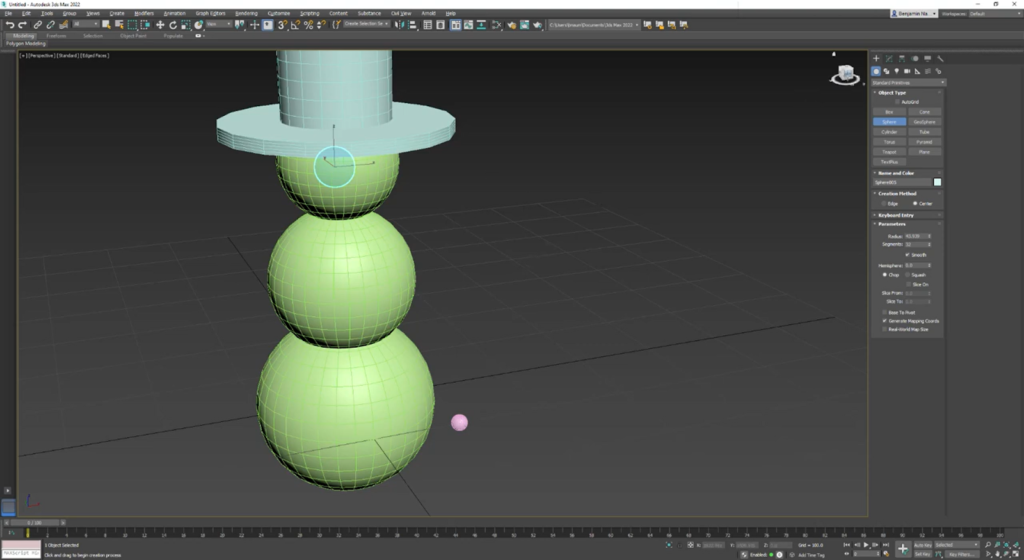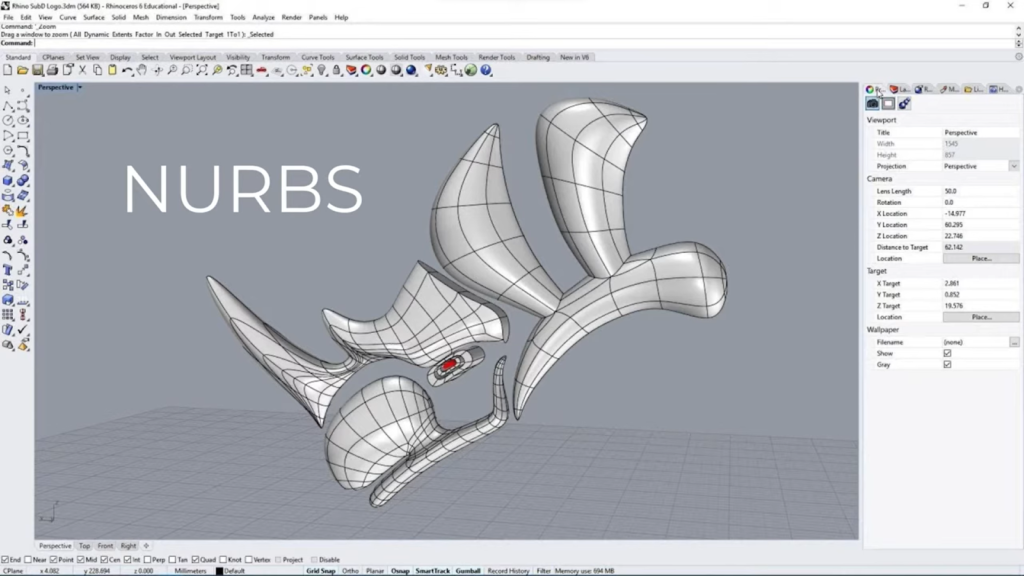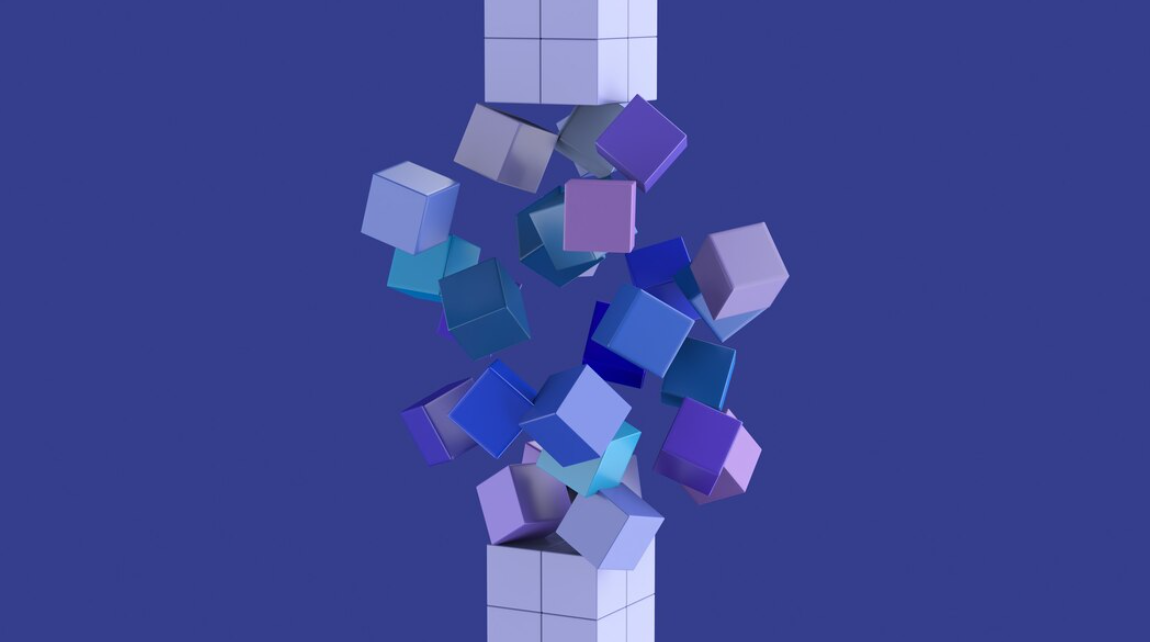Welcome to our in-depth exploration of the fascinating world of 3D modeling! In this article, we will take you on a journey through the diverse and dynamic landscape of 3D modeling techniques. Whether you’re an aspiring artist, a seasoned designer, or simply curious about the process behind creating 3D objects, this comprehensive guide will shed light on the different types of 3D modeling and their unique applications.
So, let’s dive in and discover the strengths, intricacies, and creative potential of each type of 3D modeling. Whether you’re seeking artistic freedom, engineering precision, or photorealistic rendering, this article will equip you with the knowledge to unleash your creativity and thrive in the exciting realm of 3D modeling.
What is 3D Modeling?
3D modeling is a transformative digital process that brings objects and environments to life in three-dimensional space. It involves the creation of intricate virtual models using specialized software, enabling artists, designers, and engineers to visualize and materialize their concepts with remarkable precision. By manipulating vertices, edges, and faces, these software tools sculpt and mold digital structures, giving them depth, volume, and texture. 3D modeling finds applications across a broad spectrum of industries, including animation, video games, architecture, product design, and medical visualization. This technology unlocks boundless creativity, allowing artists to push the boundaries of imagination and engineering professionals to simulate and optimize real-world structures. Whether it’s creating stunning visual effects in movies or developing realistic prototypes for new products, 3D modeling has become an indispensable tool in today’s rapidly evolving digital landscape.
What are 3D Models Used For?
3D models serve as invaluable tools across numerous industries, harnessing the power of digital visualization and innovation. They find versatile applications in various fields, contributing to the advancement of technology and artistic endeavors alike. Some common uses of 3D models include:
- Animation and Gaming: Designing intricate 3D characters and immersive virtual worlds for animated films and video games;
- Product Design: Building and refining product prototypes in fields such as manufacturing, engineering, and architecture;
- Medical and Technological Advancements: Developing new products, devices, and medical equipment to revolutionize healthcare and technological sectors;
- Fashion Industry: Creating digitized 3D garments for more efficient and accurate design processes in the fashion world;
- Real Estate: Modeling and rendering architectural designs to showcase unbuilt spaces, providing clients with captivating visualizations;
- Prototyping and Testing: Facilitating product testing and simulations to ensure quality and safety before physical production;
- Education and Training: Enhancing learning experiences by visualizing complex concepts and providing hands-on training with realistic models;
- Scientific Research: Supporting scientific exploration by creating accurate representations of objects and phenomena;
- Digital Art and Visual Effects: Enabling artists to craft stunning visual effects and detailed digital artworks with precision;
- Historical and Cultural Preservation: Creating digital archives of artifacts and historical sites to preserve cultural heritage.
Type of 3D Modeling

3D modeling encompasses a diverse range of techniques and approaches that enable the creation of virtual three-dimensional objects and environments. From primitive modeling, which uses basic geometric shapes as building blocks, to more advanced methods like sculpting and parametric modeling, each type of 3D modeling offers unique features and advantages. Sculpting allows artists to mold and manipulate digital surfaces like virtual clay, resulting in highly detailed and organic models. Parametric modeling, on the other hand, employs mathematical parameters to create flexible and adjustable designs. Additionally, procedural modeling offers a way to generate complex structures algorithmically. Whether it’s for entertainment, engineering, architecture, or other industries, 3D modeling techniques continue to evolve, empowering creators to bring their ideas to life with stunning realism and creativity.
| Type of 3D Modeling | Approach | Representation | Flexibility | Precision | Ideal for |
|---|---|---|---|---|---|
| Primitive Modeling | Building shapes using basic geometric primitives like cubes, spheres, etc. | Simple and efficient, but limited in complexity. | Low | Low | Quick prototyping, basic structures. |
| Polygonal Modeling | Constructing 3D models by connecting polygons (triangles, quads) | Versatile and widely used, handles complex shapes | High | Moderate | Animation, gaming, visualization. |
| NURBS Modeling | Utilizing mathematical NURBS curves and surfaces for smooth shapes | Highly precise and smooth surfaces | High | High | Automotive design, consumer products. |
| Solid Modeling | Creating 3D objects by adding, subtracting, or intersecting solid shapes | Accurate and suitable for engineering purposes | High | High | Engineering, architecture, manufacturing. |
| Wireframe Modeling | Representing 3D models using only lines and vertices | Minimalistic and fast | Low | Low | Conceptualizing, initial design stages. |
| Surface Modeling | Focusing on defining the external appearance and smooth surfaces | High-quality visual representation | High | Moderate | Animation, character design, organic shapes. |
Primitive Modeling

Primitive modeling is a fundamental 3D modeling technique used in computer graphics and design. This approach involves creating 3D objects using basic geometric shapes, such as cubes, spheres, cylinders, cones, and planes. The key characteristics of primitive modeling include:
- Utilizes basic geometric shapes as building blocks for 3D object;
- Offers a quick and efficient method to establish the general form and structure of models;
- Acts as a foundation for more complex designs, allowing for easy modifications and transformations;
- Ideal for creating architectural models, simple props, and initial prototypes;
- Serves as a starting point for advanced modeling techniques and detailed workflows.
Polygonal Modeling
Polygonal modeling is a widely used and versatile 3D modeling technique that involves constructing objects using interconnected polygons. These polygons, typically triangles or quads, form the surfaces of the 3D model. This approach allows for the creation of complex and detailed shapes by connecting vertices, edges, and faces. The key characteristics of polygonal modeling include:
- Utilizes interconnected polygons as the building blocks for 3D models;
- Offers flexibility and efficiency in creating both organic and hard-surface objects;
- Allows for smooth or sharp edges, depending on the arrangement of polygons;
- Enables artists to subdivide and refine models to achieve higher levels of detail;
- Compatible with various rendering and animation software, making it suitable for diverse applications.
Rational B-Spline Modeling
Rational B-Spline Modeling is a powerful 3D modeling technique that shares similarities with NURBS modeling but operates with distinct mathematical principles. It utilizes B-Splines, which are mathematical curves that pass through a series of control points, to create smooth and intricate surfaces. The “rational” aspect refers to the incorporation of weights assigned to each control point, allowing for greater control over the curve’s shape and the resulting surface. Rational B-Spline Modeling shares several characteristics with NURBS, but it possesses unique attributes that set it apart:
- Utilizes B-Splines to define surfaces, ensuring smooth and continuous shapes;
- Incorporates control point weights for precise surface control and refinement;
- Offers a flexible and efficient method for creating complex and organic shapes;
- Suitable for applications in industries such as automotive design, engineering, and animation;
- Provides an alternative to NURBS modeling, offering a different mathematical foundation for surface creation.
Non-Uniform Rational Basis Spline (NURBS)

Non-Uniform Rational Basis Spline (NURBS) is a sophisticated and widely used 3D modeling technique that utilizes mathematical curves to represent complex surfaces. It provides a precise and flexible approach to creating smooth, organic shapes with unparalleled accuracy. NURBS modeling involves defining curves using control points and weights, which allow for precise control over the shape and curvature of the surfaces. The key characteristics of NURBS modeling include:
- Uses mathematical curves to define surfaces, enabling smooth and seamless shapes;
- Provides precise control over the surface’s form with control points and weights;
- Allows for complex surfaces to be created with fewer control points, reducing computational overhead;
- Supports accurate modeling of both organic and mechanical shapes;
- Ideal for industries like automotive design, aerospace engineering, and industrial design.
CAD Software
Computer-Aided Design (CAD) software is a specialized category of 3D modeling tools widely used in engineering, architecture, and industrial design. It empowers designers and engineers to create precise and detailed 3D models of physical objects and structures with exceptional accuracy. Some key characteristics of CAD software include:
- Parametric Modeling: Enables the creation of models with defined parameters, allowing for easy modifications and design variations;
- Solid Modeling: Allows the design of three-dimensional solid objects with defined volume and geometry;
- Surface Modeling: Focuses on creating complex curved surfaces for smoother and more organic shapes;
- Assembly Design: Enables the assembly of multiple parts or components to create a complete product or structure;
- Technical Drawings and Documentation: Facilitates the generation of detailed technical drawings and documentation for manufacturing and construction purposes;
- Simulation and Analysis: Allows for virtual testing and analysis of designs for performance evaluation and optimization.
Solid Modeling
Solid modeling is a popular and versatile type of 3D modeling that is widely used in various industries, including engineering, architecture, and product design. This method focuses on creating digital representations of objects as solid, three-dimensional entities, allowing for complex and realistic designs. The primary characteristic of solid modeling is the creation of fully enclosed and manifold surfaces, ensuring that the model is watertight and has well-defined boundaries. Some key features that distinguish solid modeling are:
- Represent objects as three-dimensional volumes rather than just surfaces, enabling precise calculations of mass, density, and other physical properties;
- Employs parametric features, allowing users to define relationships between different parts of the model, making it easy to modify and update designs;
- Feature-Based Modeling: Solid modeling software often uses features like extrusions, revolutes, fillets, and booleans to build models based on a series of operations, providing greater flexibility in design;
- Allows the creation of complex assemblies where multiple parts can be assembled and interact with one another, enabling virtual testing and prototyping;
- Can be rendered and visualized with realistic textures, materials, and lighting, making them ideal for presentations and simulations;
- Can be analyzed using FEA software to determine stress distribution, deformation, and other engineering factors, crucial for evaluating structural integrity.
Wireframe modeling
Wireframe modeling is a foundational type of 3D modeling that represents objects using only lines and vertices, without any surfaces or volume. This technique provides a simplified visual representation of a 3D object and is commonly used in the early stages of design and conceptualization. The key characteristics of wireframe modeling include:
- Wireframe models are lightweight and easy to create, making them ideal for initial design ideation and visualization;
- As wireframes lack complex surfaces and textures, they require less computational power and memory, making them quicker to render and manipulate;
- Wireframes offer a clear and unobstructed view of the object’s underlying structure, allowing designers to focus on the form and layout of the model;
- Wireframes consume minimal storage space, making them suitable for projects with limited storage resources;
- Modifying wireframe models is straightforward, as changes can be made directly to the lines and vertices without concerns about surfaces;
- Wireframe modeling is commonly used in architectural design to visualize building structures and spatial relationships effectively.
Surface Modeling
Surface modeling is one of the primary methods used in 3D modeling, allowing the creation and manipulation of complex surfaces to design intricate objects and characters. This technique focuses on defining the external appearance of the 3D model and is particularly useful when the emphasis lies on the outer form rather than the internal structure. Here are some key characteristics of surface modeling:
- Enables designers to achieve a high level of precision when creating smooth and organic surfaces, making it ideal for modeling objects like cars, consumer products, or characters for animation and gaming;
- Provides extensive control over curves and surfaces, allowing designers to modify and fine-tune the shape of the 3D model with precision and ease;
- Often utilizes NURBS, which are mathematical representations used to create and control smooth, curved surfaces. NURBS offer a flexible way to design complex shapes while maintaining accuracy;
- Involves working with patches, where designers construct the model by connecting multiple smaller surface patches together to form the final 3D shape;
- Since surface modeling focuses on the external appearance, models created using this technique often achieve higher quality when it comes to rendering and visual representation;
- Allows designers to optimize polygon counts, ensuring that the model remains efficient and optimized for animation and real-time applications;
- Provides designers with greater flexibility to explore and experiment with various design iterations, making it suitable for rapid prototyping and design refinement.
Conclusion
The world of 3D modeling offers a diverse range of techniques to cater to various design requirements and creative visions. Each type of 3D modeling brings its own strengths and limitations, making it crucial for designers and artists to choose the most suitable method for their projects. Parametric modeling excels in engineering and architectural designs, while sculpting offers unparalleled artistic freedom. Meanwhile, solid modeling is ideal for precision-based manufacturing, and surface modeling shines in creating detailed and visually stunning external appearances. Whether it’s constructing complex structures, crafting characters for animation, or prototyping consumer products, understanding the different types of 3D modeling allows creators to bring their ideas to life with unmatched precision and creativity. Embracing this diverse array of techniques opens up a world of possibilities for designers and empowers them to push the boundaries of imagination and innovation in the dynamic realm of 3D modeling.
